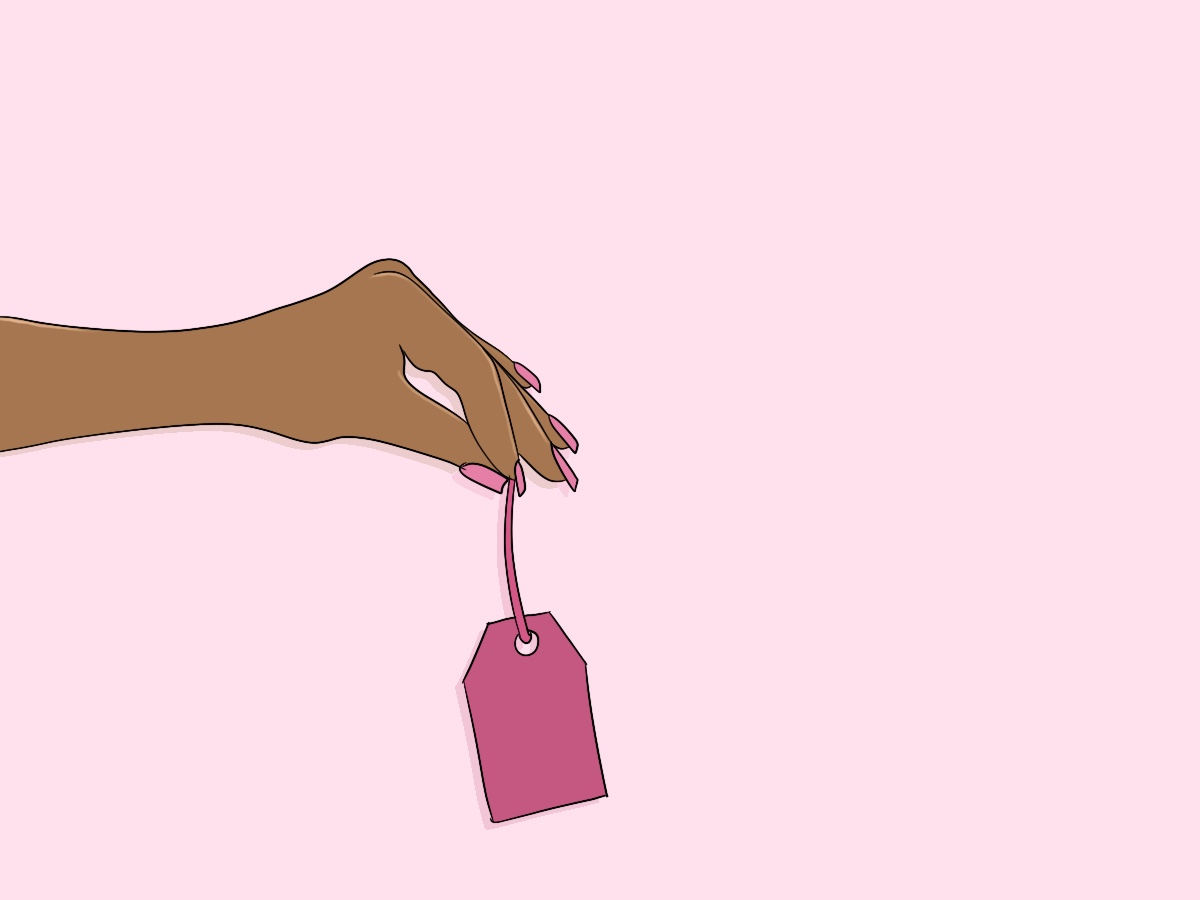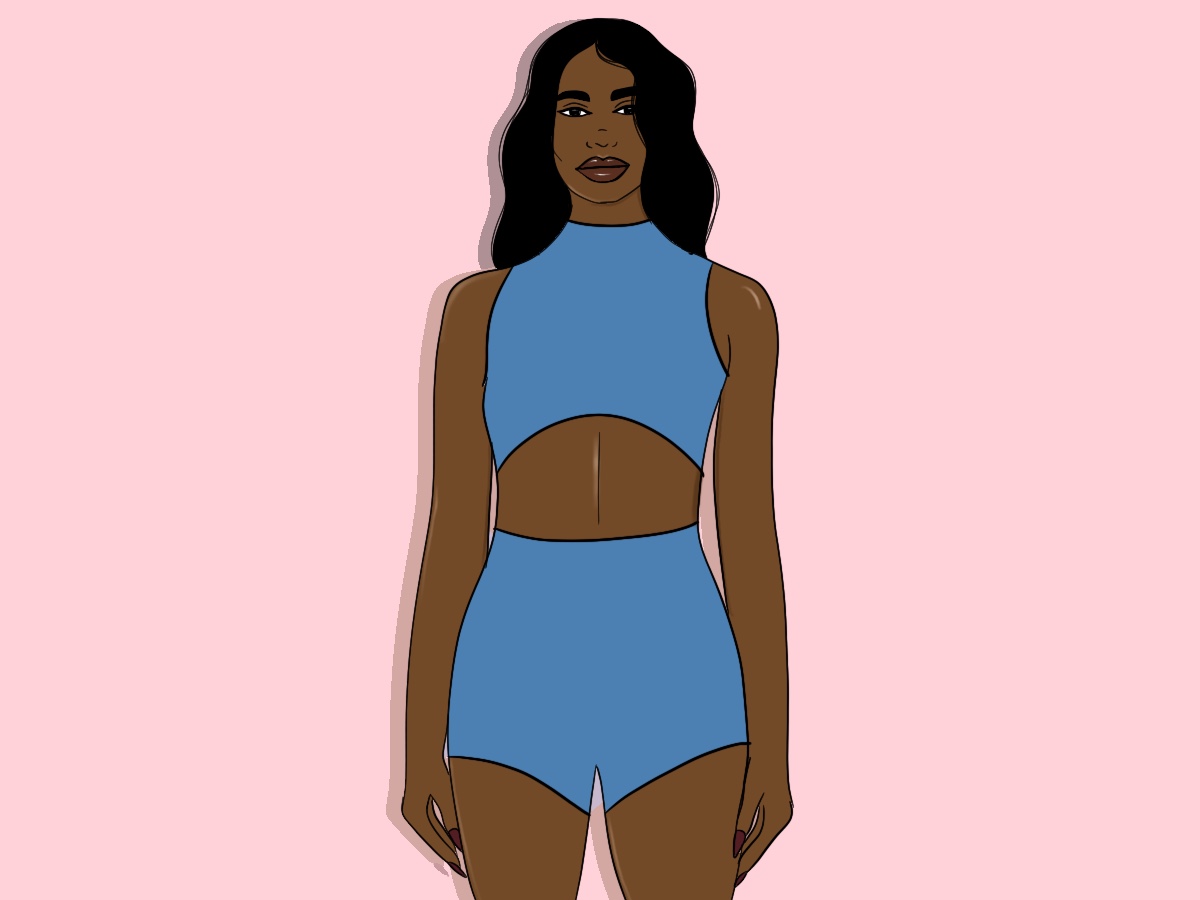A few months ago, I downloaded TikTok for the first time.
It was an interesting experience because, as a 25-year-old, I’m considered above the age demographic for this app. You’d think someone who lived through the early 2000s diet culture and Tumblr thinspo era, TikTok wouldn’t have phased me but this app truly got to me.
I want to talk about our obsession with our bodies, especially body type labelling. Over the years, we’ve seen the rise of classification theories discussed and dissected all over the internet. In a world where beauty standards are growing increasingly unattainable, is labelling our bodies helpful or harmful?
The fruit theory
Apples, pears, celery, carrots—this isn’t a shopping list, but examples of the fruit theory, a body classification system that emerged at North Carolina State University in 2005. A simpler version can be found here:
The study criticised the sizing range in the US fashion industry—which was created around the 40s and was only updated twice, the last being in the 70s. Instead, the study suggests that human bodies can be categorised in either ‘fruits’ or ‘shapes’ using 3D body scanning imaging, allowing the industry to create more accurate sizing. While infinitely better than the 80-year-old theory beforehand, this study only had 21 female participants, all of whom were primarily from North Carolina. The study did not account for racial or gender differences, bone density, genetics and muscle mass.
So we started to look towards the Kibbe body type theory.
Kibbe body type theory
This classification system was created by David Kibbe in his book Metamorphosis: Discover Your Image Identity and Dazzle As Only You Can. Although it was published in 1987 it has recently become an internet sensation. His system focuses on categorising women’s different body shapes based on bone structure, body flesh and natural body fat percentage. There are 13 categories on a scale from ‘Yang’ (sharp, angular, muscular features) to ‘Yin’ (soft, rounded, fleshy features).
There are hundreds of articles, videos and quizzes which explain the Kibbe theory. It is revolutionising the way women view their bodies because it takes into account something that has largely been ignored—our body structure. This system celebrates our colourful variety of genetics, basing each type on our bone arrangement and natural features—not on what we look like but on how we are shaped.
I first found this study to be life-changing. For once, I didn’t feel ashamed of my big thighs or rounded features. But when I started to think about it, the more I wondered why was this life-changing. Why was I obsessed with finding my ‘perfect shape’? Why did I need to know what my body looked like, to find clothes that ‘flattered’ by body type?
Is labelling ourselves important?

Why do we need labels?
I asked a few friends of mine, women in their mid-20s and above, about their thoughts on body type labelling.
A few said it was key in helping them understand their bodies. By understanding their ‘shape’, they were able to make informed decisions on clothes they could buy and understand how to flatter certain attributes, such as a smaller waist or a bigger bust.
But is this a trap? Who are we accentuating these features for? And who told us that certain features need to be accentuated? Are we dressing for ourselves or are we dressing for the beauty standard?
Others absolutely abhor body type labelling. They felt it was unhelpful because it was all about changing or giving the illusion of having a specific body type, such as the trending body type of now. The labels might seem innocent at first glance but it’s still about you fitting your body into certain categories.
Something that came to light while I was researching for this article was how body type labelling can thank its origin partly to eugenics. In the 1940s, American psychologist, William Herbert Sheldon, created ‘Somatotypes’, which categorises the human body into three different categories and each category has its own measure of morality, intelligence, and future potential.
Does that sound eerily familiar?
Unsurprisingly, this pseudoscience was based on racist and fatphobic ideals of the time and has been disproved as just ‘quack’ science. But the fact that body type labelling as a concept is still around today and growing in popularity, considering its disturbing origin, is a cause for concern.
I recommend reading Fearing the Black Body: The Racial Origins of Fatphobia by Sabrina Strings for a more nuanced understanding. The book goes into detail about body types, fatphobia and early modern philosophy, which ties together the origin of modern body type labelling and standards of beauty.
I also recommend reading up on Ayurvedic body types as an alternative to traditional Western ideas of body types. It is an Indian system that focuses on three body types (doshas). The doshas are considered biological energies that exist in our bodies and by identifying your type, you can improve your health and wellness.
Bodies are not trends
We are amidst a cultural shift.
To those of us who have thicker, fuller bodies it’s time to pack up. The 20-year cycle is over and the pendulum has swung the other way—skinny is back in.
But it’s not like skinny ever left, right?
It’s just okay to aspire to be skinny again. Celebrities that were once the cultural icons of having thicker bodies have slimmed down, for example, Kim Kardashian and her clan. Throw in the popularity of buccal fat removal surgery and the Ozempic shortage epidemic, the rich and famous are starting to look like gaunt, sickly Victorian children.
When thicker bodies were on trend, we all wanted the ‘hourglass’ figure. We spent days and nights scouring the internet, looking for ways to make our hips and butts bigger. There was a spike in BBLs across the globe to achieve the perfect slim-thick look—because remember, you could only be ‘thick’ in the right places. It was an insane time being young and online. I still suffered the effects from the early 2000s diet era—so imagine my surprise when women were getting surgery and fillers to look more like me.
All of a sudden, I could find clothes that fit me. Clothes that were, for once, cute and being styled by other women that looked like me.
Which is when it all clicked.
Now that I adhered to the new beauty standard, fast fashion companies had a legitimate reason to make clothes for me. I spent so many years suffering because I was considered too big and now people are suffering because they’re considered too small. Because in fashion, thick and skinny take turns at being the desirable body type; it thrives on its ability to fool us into thinking it’s fresh and original.
Body type labelling is nothing new, it’s been around for centuries. Thousands of years ago, it was desirable to be fat because it meant you were wealthy enough to eat. Now it means you’re either too poor to afford organic foods or too lazy to go to the gym.
Social media and the present
Body checks. Need I say more?
If you don’t already know, TikTok is the worst place to be if you have any form of body dysmorphia. Bodychecks are a TikTok trend that focuses on ‘proving’ you have perfect or imperfect features. For example, there is a mirror-reverse filter to check if your face is symmetrical. Others include checking how big your ‘tummy bump’ is from the side and if you have a flat or hump nose bridge.
It’s interesting how these trends are recycled versions of older, past trends. I lived through the height of the Tumblr thinspo era, which romanticised eating disorders and other mental disorders through pictures.
However, TikTok is a video-sharing platform and your personal life must match whatever trend you’re trying to adhere to. Trends like ‘that girl’, ‘clean girl’ and ‘stay-at-home girlfriend’ all promote this ideal standard of rich, thin, white beauty. Watching the evolution of body type labelling coming from eugenics trickling its way down to TikTok trends 200 or so years later is sad. TikTok is all about the aesthetic and God forbid you don’t follow every arbitrary rule it demands from you.
But you can understand why people follow the trends. It’s affirming for them that their bodies belong and deserve to be loved.
Kibbe has an incredibly thriving fanbase on social media (YouTube was where I first heard of it). People have dedicated entire channels to breaking down body types, charging money as consultants and giving style recommendations.
I went down a rabbit hole trying to find my perfect shape: retaking the test every few weeks, analysing photos of myself and other celebs, and dissecting every imperfection I had. Eventually, I got to the point where I was so obsessed with finding what would look good on me, what other people thought looked good on me, and what was ‘meant’ for my shape, that I was contorting my style to fit into my ‘body type’. According to Kibbe’s theory, I’m a ‘Soft Romantic’. I started looking for and buying clothes that would fit this, even if I didn’t like them, because that’s what I thought I had to do.
Kibbe’s body type theory, while being the most diverse body classification system, still used skinny, white celebrities. Like all systems before, it ignores racial, social, and economic factors. People are incredibly diverse and no one size can ever hope to fit us alone, let alone thirteen.
In the end
I think that body labelling is something that we, as humans, can’t help but do. Most of us have brains that are hardwired to organise and create order. It can be used as a force for good but only when it’s taken with the smallest grain of salt.
A lot of women use body type labelling as a jump-off point, buying clothes tailored to fit their bodies the way they want them to fit. They use body types to accentuate what they want to accentuate, not what society tells them they must. My friends all agreed that labelling yourself was not healthy, especially if you already suffer from poor self-esteem and body image, but when used sparingly it can offer some insight into your choice of style and clothing.
There are also hundreds of ripe online communities of women sharing their body types. It’s become a space for them to share their struggles, advice and stories. I’m always astounded by how kind and compassionate these communities are, even in the ugliest of places.
By understanding its origins, we are able to critically analyse the cyclical nature of trends and understand that they do not define us. It allows us to view ourselves in our bodies more neutrally, acknowledging that we are all different and there’s nothing wrong with us looking different.
The danger comes when we use body types as an example of why we are not good enough or to adhere to a specific body type because it’s ‘in style’. The whole point of the body type movement was to create and foster community between us—by celebrating our differences, not tearing ourselves down.
Find more lifestyle articles here >
Written by Nashwah Azam
Illustrated by Francesca Mariama

